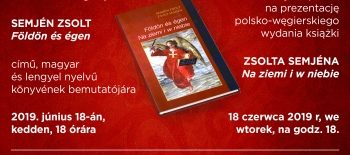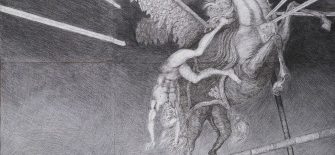Thursday 29 September, 7:00 pm — Wednesday 30 November 2016
1061 Budapest, Andrássy út. 32
Opening: 29.09.2016, 7 PM
Greeting by Julia Fabényi Director of the Ludwig Museum – Museum of Contemporary Art
Dorota Monkiewicz Head of Wrocław Contemporary Museum
Opening speech by Sylwia Serafinowicz curator
Artists: Olaf Brzeski, Krystian “Truth” Czaplicki, Karolina Freino & James Muriuki, Piotr Skiba, Kama Sokolnicka, Karol Radziszewski, Gregor Różański
Among the most popular contemporary forms of patronage of the arts are residency programmes. They provide artists with an opportunity to escape the imperative of earning money while being in a new, stimulating place. Since Louis XIV founded the Prix de Rome scholarship, these conditions have been considered perfect for making art. However, today’s residencies are significantly shorter and impose greater budgetary discipline than those in the 17th century, which reflects the speed of contemporary life and obsession with quick and tangible results. This state of affairs is emphasised by the young artists from Wrocław who have been invited to take part in the exhibition. The main subject of the works, which were made during the artists’ residencies in foreign countries, is jet lag, sleep disturbances, confrontation of dreams with reality, and time pressure. In this way, the unpleasant consequences of travelling have been translated into spectacular objects, photographs and videos.
Artists in transit
The formula of artist-in-residence has a long history, in its current shape it reaches the end of 19th century. Since then thousands of art supporting programs were developed around the world creating large infrastructure. Art residencies promise valuable experience of cultural exchange and social capital gaining, while in case of “Jet Lag” project difficult travelling circumstances helped artists to create critical art statement about the whole procedure and turned into interesting starting point for the discussion. Exhibition in Budapest-based Platan Gallery presents variety of artworks created by young Polish artists focusing on their residencies in foreign countries and analysing unpopular aspects of these, like jet lag, sleep disturbances, confrontation of dreams with reality or working under time pressure.
Patrycja Rup: What was the main impulse for this project?
Sylwia Serafinowicz: When I was asked to curate in Budapest a show devoted to the younger generation of Wrocław-based artists, I started thinking about the nature of such travelling projects, transplants of ideas developed in one place and pasted into another context. I decided to listen to the experience of the artists themselves and consequently I focused on their work developed in unfamiliar setting, during artistic residencies. They surprised me with their humour, honesty and ability to turn possibly stressful circumstances into intelligent, observant and brave pieces. This is why a travelling exhibition became a reflection on the conditions of its production and the conjunction of work and travel.
PR: The subject of “Jet Lag” artworks is focused rather on the negative sides of foreign journeys, was it the common experience of artists with whom you worked?
SS: The show is not focused on negative sides. It shows how artists creatively deal with constraints of time and limited means of production, but of course it also point to those limitations and our obsession with fast results, fast outcomes.
PR: Do you have a vision how the art residency system should look like to help artists fulfil their goals and bring satisfying results for the organisers?
SS: Ideally, residencies would be offering longer stays and focus on networking and stimulating the artists rather than expecting immediate results in a form of an art work, but such shift is incredibly difficult to achieve since every funding is entangled in bureaucracy and evaluation reports.
PR: Which of the presented works would you recommend in particular to us?
SS: The show is very compact and each work relate to another. I believe that it won’t be too challenging in terms of time to see them all. Every work presents a different, original take on such subjects as creativity, boredom, jet lag, sleep disorders and travel. Selected artists are amongst the most interesting in today’s Poland and each of them is not to be missed.
PR: You recently contributed in Kama’s Sokolnicka exhibition “Tagesmudigkeit” in Dusseldorf. Can you tell us a bit more about your future projects?
SS: Thank you for asking. In October, I curate in Liverpool a panel discussion, titled “Bilocation” with amazing artists Sonia Boyce, Adham Faramawy and Nina Edge. We are going to talk about the possibilities of communicating complex identities through art and exhibitions. Our aim is to address multicultural heritage of Britain from a different perspective. I feel like we are still under the spell of exhibitions dividing the communities of artists by focusing on people’s place of birth, or their parents’ motherland. That’s why I invited artists to help me invent other ways of communicating our practices. Bilocation – being in two places at the same time, can be even too little of a term. Most of us create and live across many different realities, which is also somewhat related to the subject of travel.
Sylwia Serafinowicz – Polish art critic and Collections Curator at the Wroclaw Contemporary Museum. She is also a PhD candidate at the Coutauld Institute of Art in London, member of the British section of AICAand contributor to Artforum International Magazine.
Patrycja Rup – Polish culture manager & journalist. Lives and works in Budapest.





